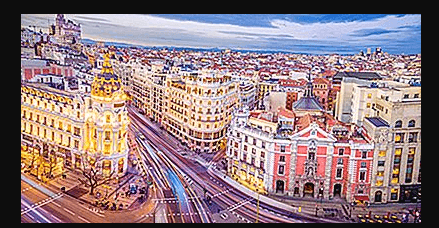Which Continent Is Spain In?
Spain is a country in southwestern Europe. The country is part of the Iberian Peninsula of Europe and shares it with Portugal, Andorra and part of France. Spain also consists of two large archipelagos, The Canary Islands, the Balearic Islands, several small islands in the Alboran Sea, as well as Melilla and Ceuta, autonomous cities in mainland Africa. Spain is an intercontinental country, as it borders Morocco in Africa, making it the only country in continental Europe to share a border with an African country. The country covers an area of about 195,360 square miles, fourth place in size among European countries, and had a population of about 46.56 million in 2016. Madrid is the capital and largest city of the country. Spain is a constitutional monarchy led by King Felipe VI. Spain has been categorized as a Latin country, with Roman traditions having been highly influential in the country’s culture.

International membership
Spain is a member of the European Union (EU), Council of Europe (CoE), United Nations (UN), World Trade Organization (WTO), Organization for security and co-operation in Europe ( OSCE), North Atlantic Treaty Organization (NATO), organization for Economic Cooperation and Development (OECD), Schengen area, as well as several other organizations. Although Spain is not a member of the G20, it has a standing invitation to annual G20 summits. Spanish is the official language throughout the country, although there are multiple co-official languages that vary by region: Basque, Galician, Catalan and Valencian.
Economy of Spain
Spain has a mixed capitalist economy that ranks fifth in Europe. According to the World Bank, the country is a high-income economy. The service sector contributes about 70% of the country’S GDP, followed by industry (14.1%), construction (9.9%) and agriculture (4.5%). The Spanish tourism sector ranks second worldwide, and the headquarters of the World Tourism Organization is located in Madrid. The country is one of the largest producers of wine and olive oil. The country’s unemployment rate was 17.2% in 2017. Spain is a top producer in renewable energy and is the largest producer of wind energy in Europe.
The country has the largest high-speed rail network in Europe, covering 2,174.80 miles, making it the second largest in the world. Spain’s high-speed train is the fastest in the world, while the Japanese express train and the French TGV are in second and third place. Barcelona has hosted the Mobile World Congress since 2006. Spain’s 2018 nominal GDP is estimated at $ 1.360 trillion, with GDP per capita expected to reach $ 29,800. The World Health Organization ranked the Spanish healthcare system seventh in the world. Healthcare is free for all Spanish citizens, as is education for children aged six to 16.
Europe
Europe is a continent in the northeastern hemisphere and has a land area of 3.93 million square miles. The continent covers 6.8% of the Earth’s land area and consists of 50 autonomous states, six partially recognized states and four dependencies. European colonial powers once ruled countries in Africa, the Americas and most of Asia. The largest cities in Europe are London, Istanbul, Moscow, Paris and Madrid. Europe is the richest continent and has the largest global economy. The continent’s nominal GDP in 2016 was $ 19.7 trillion and its PPP was $ 25.9 trillion.

